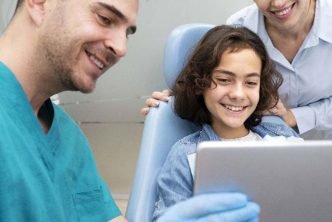Basic science and clinical medicine are the two major components of the Doctor of Medicine (MD) program. The basic science course typically precedes clinical medicine offering theoretical support for developing clinical skills imperative to becoming a qualified and well-trained doctor.
The basic science curriculum provides foundational knowledge of medicine by introducing first-year medical students to the basic theories of medicine necessary for diagnosing and treating patients by developing a strong understanding of the human body and diseases affecting parts of it. It typically involves the study of the basic structure and function of the human body. During the basic science course, students also build a strong understanding of the underlying mechanisms of diseases and how various treatments work.
The first five semesters of the MD program comprise the basic science course. Throughout the five semesters, medical students will be introduced to medical terminologies and research principles with the motive of developing theories with each passing semester. Here are the topics covered in each semester:
Table of Contents
Semester 1
The first semester of the MD program covers the following topics:
- Patient-Doctor Relations
- Histology and Cell Biology
- Developmental and Gross Anatomy
- Principles of research and evidence-based medicine
Semester 2
In the second semester, medical students learn more technical knowledge, such as the body’s molecular building blocks. The topics include:
- Biostatistics and Epidemiology
- Genetics
- Physiology
- Biochemistry and Molecular Biology
Semester 3
The third semester aims at making the medical students learn about the aspects that make a human body healthy and unhealthy, along with other aspects of medicine, by undertaking the study of the following topics:
- Neurosciences
- Microbiology and Immunology
- Behavioural Sciences and Ethics
- Patient-Doctor Relations
- Medical Spanish
Semester 4
The fourth semester of the basic science course aims to deepen the medical student’s knowledge of the basic mechanisms of common diseases and refine the ability to assess and recognize the manifestation of common diseases. Most importantly, during this semester, students acquire knowledge of diseases and therapeutic efforts to deal with them. Here are the prominent topics covered during this semester:
- Pharmacology
- Pathology
- Patient Doctor relations
Semester 5
The final semester of the basic science course typically allows students to prepare extensively for Step 1 of the United States Medical Licencing Examination and build a strong knowledge of diseases through pathology. The courses covered during this semester are:
- Clinical Therapeutics
- Pathology
- Introduction to clinical medicine
- Foundations of clinical medicine
USMLE Step 1 preparation
Basic science courses such as anatomy, physiology, biochemistry, pharmacology, and microbiology lay the foundation for medical students to understand the human body and its functions. These courses also help students to understand the underlying mechanisms of diseases and the effects of drugs and treatments on the body. This knowledge is essential for success on the USMLE Step 1 examination, which tests a medical student’s understanding of the basic sciences applied to medicine. Studying these courses helps medical students in developing critical thinking skills and problem-solving abilities, which are also important for success on the USMLE Step 1 on the first attempt and in their future careers as medical professionals.
Basic science courses help students understand the workings of the human body and its responses to disease and treatment. Studying basic sciences also develops critical thinking and problem-solving skills vital for medical professionals.





